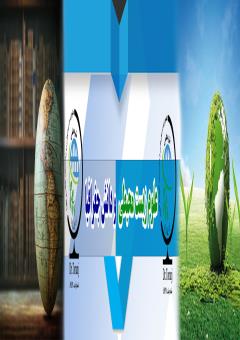Identifying the factors affecting the development of the tourism industry in Hormozgan province according to the capabilities of marine ecotourism
Subject Areas : Geography
1 - Hormozgan University
Keywords: Marine ecotourism, Hormozgan, tourist attractions,
Abstract :
Marine ecotourism is considered as a fast growing and profitable market of the tourism industry, which is in the group of nature-based tourism and sustainable tourism. There is an increasing acceptance of the negative effects of the tourism environment on the natural environment. The coasts of the Persian Gulf, with their abundant natural resources, are one of the most important and profitable treasures of the south of the country in the field of tourism industry, whose capacities are limited due to the lack of proper marketing so far. It has not been used. In this article, under the title of identifying the factors affecting the development of the tourism industry in Hormozgan province, with regard to the capabilities of marine ecotourism, it has been tried to analyze the strengths, weaknesses, opportunities and threats related to the tourism capabilities of this province using a descriptive and library analytical method. marketing its tourism industry and thus propose the marine ecotourism capabilities of this province.
• امیری, فوژان, محبی, سراج الدین, رنجبر, محمدحسین, باقری, مهدی. (1398). شناسایی عوامل مؤثر بر بازاریابی گردشگری و ارائه مدل مناسب اکوتوریسم و گردشگری روستایی (موردمطالعه: استان هرمزگان). فصلنامه علمی - پژوهشی برنامهریزی منطقهای, 9(35), 95-104.
• برقی, حمید, دهقان حسام پور, محمد, طوسی, رمضان, جمینی, داود. (1391). برنامهریزی توسعه پایدار گردشگری در منطقه خلیجفارس (مطالعه موردی: جزیره قشم). برنامهریزی فضایی (جغرافیا) 2(3), 75-94.
• رضایان, سحر, جوزی, سید علی, پیراسته, اسماء. (1392). ارایه برنامه مدیریت راهبردی توسعه طبیعتگردی جزیره قشم به روش SWOT. فصلنامه علوم و تکنولوژی محیطزیست= 15(1), 91-109
• ضیایی, محمود, میرزایی, روزبه. (1388). چالشهای مدیریتی و توسعه گردشگری در مناطق تحت حفاظت سواحل جنوبی دریای خزر. مطالعات مدیریت گردشگری 3(10), 1-34.
• Douvere, F. a. (2010). The importance of monitoring and evaluation in adaptive. Special issue on Maritime Spatial Planning.
• Granataa, Maria Fiorella. Scavonea, Valeria (2016):A description model for regeneration through urban tourism in rural towns with underused historic real estate.2nd International Symposium NEW METROPOLITAN PERSPECTIVES-Strategic planning, spatial planning, economic programs and decision support tools, through the implementation of Horizon/Europe 2020. ISTH 2020, Reggio Calabria (Italy)
• M.C., Gössling, S., Scott, D., Hall, C.M. and Gladin, E., Simpson. (2008). Climate Change. Paris: Adaptation and Mitigation in the Tourism Sector: Frameworks, Tools and Practices
• Rastegar Khaled, A., Moslehi Jenabian, N., Salahi, A., & Taj, N. (2016). The Effect of New Technologies on Youth Leisure and Social Capital. Journal of Culture-Communication Studies, 17(33), 127-147.
• Ravaud, A., Motzer, R. J., Pandha, H. S., George, D. J., Pantuck, A. J., Patel, A., ... & Carteni, G. (2016). Adjuvant sunitinib in high-risk renal-cell carcinoma after nephrectomy. New england journal of medicine, 375(23), 2246-2254.
• Saeb, K., Hajati, R. J., & Rezai, S. (2012). An Investigation into Eco-tourism Potential of the Alamut Region of Iran using SWOT Analysis Model. Ecologia Balkanica, 4(1).
• Torres-Delgado, A., & Palomeque, F. L. (2014). Measuring sustainable tourism at the municipal level. Annals of Tourism Research, 49, 122-137.
• Wang, D. G., Niu, Y., & Qian, J. (2018). Evolution and optimization of China's urban tourism spatial structure: A high speed rail perspective. Tourism Management, 64, 218-232.


